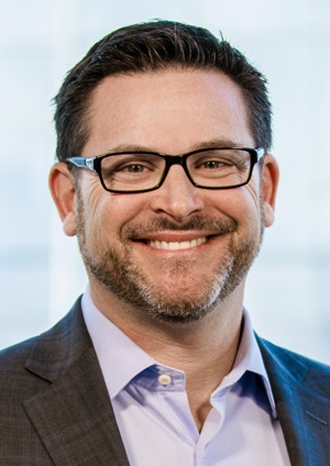Home visits are key to DaVita Health Solutions’ patient-centered approach to chronic care management
Editor’s note: Chronic diseases and conditions – such as heart disease, stroke, cancer, type 2 diabetes, chronic obstructive pulmonary disease, obesity and arthritis – are among the most common, costly, and preventable of all health problems. As of 2012, about half of all adults – 117 million people – had one or more chronic health conditions. One in four adults had two or more chronic health conditions. Seven of the top 10 causes of death in 2014 were chronic diseases.
 DaVita has a term for patients with multiple chronic conditions who are heavy utilizers of our healthcare system – MVPs, or most vulnerable patients.
DaVita has a term for patients with multiple chronic conditions who are heavy utilizers of our healthcare system – MVPs, or most vulnerable patients.
Known for its renal care services, the Denver-based company has a long history of partnering with payers and risk-bearing entities to manage the total cost of care for patients with kidney disease. Since 2016, with the creation of its DaVita Health Solutions division, the company has broadened its approach by working with payers to provide care for high-risk patients with multiple chronic conditions, such as heart failure, COPD, diabetes, etc. To do so, it is leveraging its long history of running house call programs (since 2007) and post-acute care programs (since 2001) in several markets through its medical group, DaVita Medical Group.
(In December 2017, DaVita Inc. announced that its DaVita Medical Group subsidiary will combine with health services company Optum.)
 MVPs are the highest-risk (and often, the highest-cost) patients in the healthcare system today, says DHS President Hank Schlissberg. Forty-one percent of U.S. healthcare spending is driven by 12 percent of the population with five or more chronic conditions, he points out. This is also one of the fastest-growing segments of the U.S. patient population, expected to grow by more than 20 percent over the next decade.
MVPs are the highest-risk (and often, the highest-cost) patients in the healthcare system today, says DHS President Hank Schlissberg. Forty-one percent of U.S. healthcare spending is driven by 12 percent of the population with five or more chronic conditions, he points out. This is also one of the fastest-growing segments of the U.S. patient population, expected to grow by more than 20 percent over the next decade.
“If we can’t figure out how to better treat our nation’s MVP population, we will continue to fail them as care providers, and our healthcare costs will continue to spiral,” says Schlissberg.
One out of every three of the most vulnerable patients visits the ER at least one time per year, he says. One out of every four patients has at least one hospital stay per year; and one out of every five Medicare patients is readmitted within 30 days. On average, MVPs visit 20 doctors and take 51 medications per year. “They need a high-touch, highly personalized care model that can complement their current care/providers and meet them when and where they need care most – within the home or skilled nursing facility – while providing 24×7 care coordination and a support network.
“That is exactly what DHS does, and we believe it is the future of healthcare for this highly vulnerable and costly population,” says Schlissberg. “It will require health plans working together with providers to implement new care models and innovative programs (such as house calls) that can improve the quality and cost of care for these members.”
DHS recently completed its first partnership with a large regional health plan, says Schlissberg. The company built a physician-led, home-centered care model for the plan’s most vulnerable members, and then smoothly transitioned those capabilities after successfully demonstrating positive health trends and operational efficiencies.
Over nearly two years, DHS served approximately 7,000 patients in the partnership with over 600 local primary care physicians, specialists and extended care teams, including family members, caregivers, hospitals, SNFs and home care agencies. Among the results:
- 10-15 percent fewer emergency room visits.
- 35-40 percent fewer hospitalizations.
- 15-20 percent lower cost of care.
- 46 percent lower SNF length of stay.
- 64 percent lower SNF-to-acute 30-day readmission rate.
- 91 percent patient satisfaction rating.
How it works
DaVita Health Solutions leadership includes executives from DaVita Medical Group who were responsible for launching and running its house calls and post-acute care programs. “We took best practices from those programs, combined with our integrated kidney care program expertise, and formed DHS,” says Schlissberg.
“The traditional care model for those with multiple chronic conditions does not work. These patients often cannot easily manage the 51 medications (on average) they take per year or visit the 20 doctors (on average) they see per year. And they often cannot properly coordinate their care across their specialists and primary care physician.”
Each of these patients’ chronic conditions requires complex management, he points out. “A one-size-fits-all care model that relies on traditional office visits that often last 15 minutes will never work for this population. Their needs require comprehensive care teams working together to ensure coordinated and convenient care.”
When DHS partners with a health plan, the company builds out a care team and works within the community to partner with the plan’s primary care physicians. Community-based care teams include MDs, NPs, RNs, behavioral health specialists, palliative care specialists, social workers, pharmacists and dietitians.
“We work with the health plan to announce the program to its highest-risk members as a complimentary benefit program to which they have the gift to receive,” says Schlissberg. The initial communication usually comes from the plan to its members and is supported by communication from primary care physicians. “We also work with local SNFs to ensure health plan members are seen by our skilled nursing facility specialists (SNFists), so their care can be coordinated.”
Partnering with local primary care physicians and specialists is an important part of DHS’s clinical and business strategy, says Schlissberg. Although DHS provides primary-care-type services, it is not the primary care physician of record, he says. “We provide an incremental layer of service; and we intentionally partner with local physicians.”
Local caregivers typically welcome the assistance they receive from DHS, he adds. “They want to do the right thing by their patients, and they know that they can’t possibly address the needs of most MVPs in a 15-minute office visit. You can’t learn everything you need to know unless you are in the home, meeting caregivers, looking at the home environment and all the determinants of health.”
That’s the role the DHS team plays.
Care plan
Every engagement begins with a comprehensive health assessment of the patient in his or her home or the skilled nursing facility. “This is most critical for establishing a care plan, which we then coordinate with existing doctors,” says Schlissberg. It is also important from a coding and documentation standpoint.
“Our biggest challenge is getting in the door, as some patients are reluctant to have a doctor or nurse visit them at home,” he says. “But once we gain their trust and establish a relationship so they are comfortable setting up an initial house calls visit, we have found the first visit – which is usually one and a half to two hours – highly valuable. The patients are comfortable in their home setting and reveal more about their care needs than when they are in an office setting.
“In that initial visit, we are able to build out a comprehensive care plan that includes both their personal and health goals. We also identify care needs that can only be found within the home – like tripping risks and other health hazards, medication management issues, social care needs, dietary needs, transportation needs, etc. We can then incorporate those broader care needs with actionable next steps into each member’s comprehensive plan.
“People welcome this. We hear things like, ‘I just didn’t know healthcare could be like this.’”
Palliative care can also be an important part of the plan.
“There is little more powerful than having a patient tell clinicians, ‘my daughter is getting married in November and I want to be able to walk her down the aisle,’” says Schlissberg. “The ability to help them achieve that goal is among the most beautiful things we do.”
DHS also operates post-acute care programs that involve employed SNFists who work in concert with the house calls care team. These SNFists round within the skilled nursing facility when a DHS/health plan member is admitted. “They work to ensure expedited dismissals and smooth transitions, and also coordinate care with the house calls care team and member primary care physicians. And we staff a 24×7 member support center to provide after-hours care and regular coordination.”
The payoff
Schlissberg admits that the DHS program is labor-intensive and requires comprehensive care teams supported by care coordinators, call centers and operations teams. It also requires the right population of members within a market to justify the program costs. But DHS leads to fewer ER visits, fewer hospitalizations and lower healthcare costs, so the investment pays off.
“Today’s healthcare system is just not built for MVPs, who are frequent utilizers of the ER and hospital, heavy users of prescription drugs, who have significant social and behavioral health challenges, and require more attention than a traditional office setting can typically offer.
“A different care model is required, and incumbent payers and providers are just not positioned to solve it. Payers are too far from the point of care and are trying their best to do telephonic care management on massive scale. Providers, who are inherently local, don’t have the scale to build capabilities and interventions for the 5 percent of patients –the MVPs – when they have to focus on the 95 percent.
“We believe at the core of this new care model are good old fashioned house calls, like the old Marcus Welby TV show. Doctors with black bags coming to you, like our parents and grandparents remember. Except now the house-calls ‘doctor’ is an entire care team with social workers, nurse practitioners, behavioral health specialists, care coordinators, etc.
“We feel a moral imperative to make a difference for these patients, the ones who are most in need of a different care model,” he says. “Caring for these members is a critical next step in creating a sustainable ecosystem for patients, payers and employers, and in their evolution to value-based care.”
